Sacred Sanctum Quest: India's Divine Mythological Journey
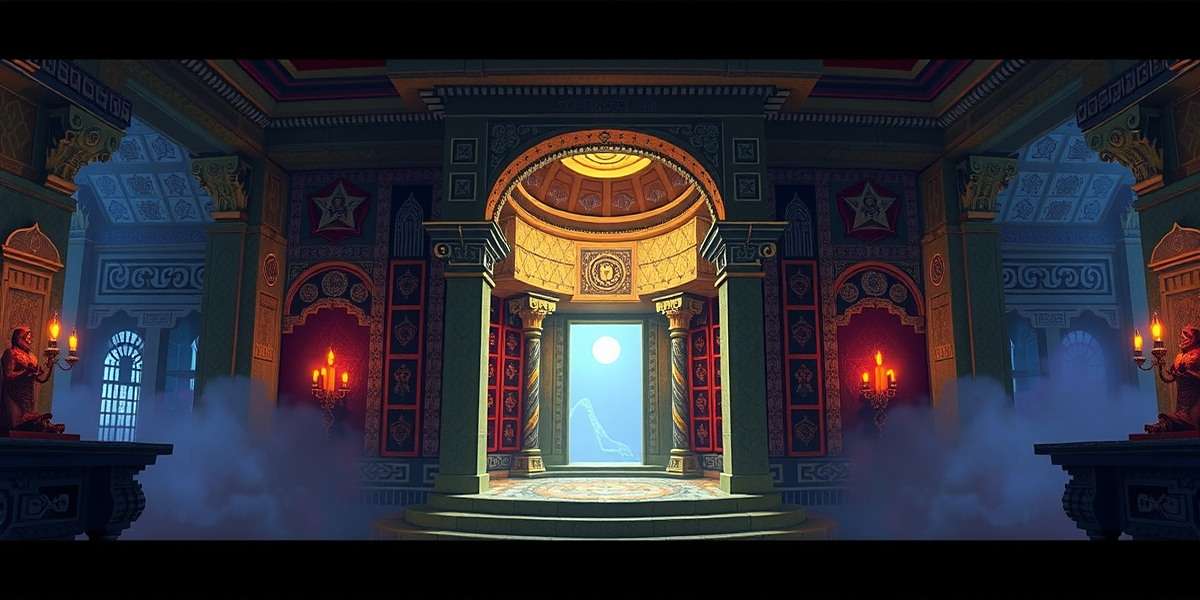
Welcome to the ultimate guide for Sacred Sanctum Quest – the game that has revolutionized how Indians experience our rich mythological heritage through digital gaming! Developed with deep reverence for India's spiritual traditions, this immersive adventure has captivated millions from Kashmir to Kanyakumari.
What makes Sacred Sanctum Quest truly exceptional? It seamlessly blends entertainment with spiritual wisdom, taking players on a pilgrimage through India's most sacred sites while solving puzzles rooted in our ancient scriptures and philosophical traditions.
Whether you're a student in Delhi, a farmer in Punjab, or a homemaker in Kerala, Sacred Sanctum Quest offers an experience that resonates with the spiritual core of every Indian. It's not just a game – it's a journey of discovery into our collective soul.
Introduction to Sacred Sanctum Quest
Released in 2022 by Daman Games, Sacred Sanctum Quest emerged from a vision to create a gaming experience that honors India's spiritual legacy while providing world-class entertainment value.
The narrative follows Maya, a curious young scholar from Banaras who inherits an ancient amulet from her grandmother. This mystical object activates during a visit to the Kashi Vishwanath Temple, revealing a hidden network of sacred sites across India that are connected by spiritual energy lines known as "devyoni."
As Maya, players must journey through 18 sacred locations, each representing different aspects of Indian spirituality – from the Shaivite temples of Tamil Nadu to the Vaishnavite shrines of Uttar Pradesh, from the Jain tirthas of Gujarat to the Buddhist stupas of Bihar, and from the Sikh gurdwaras of Punjab to the Sufi dargahs of Rajasthan.
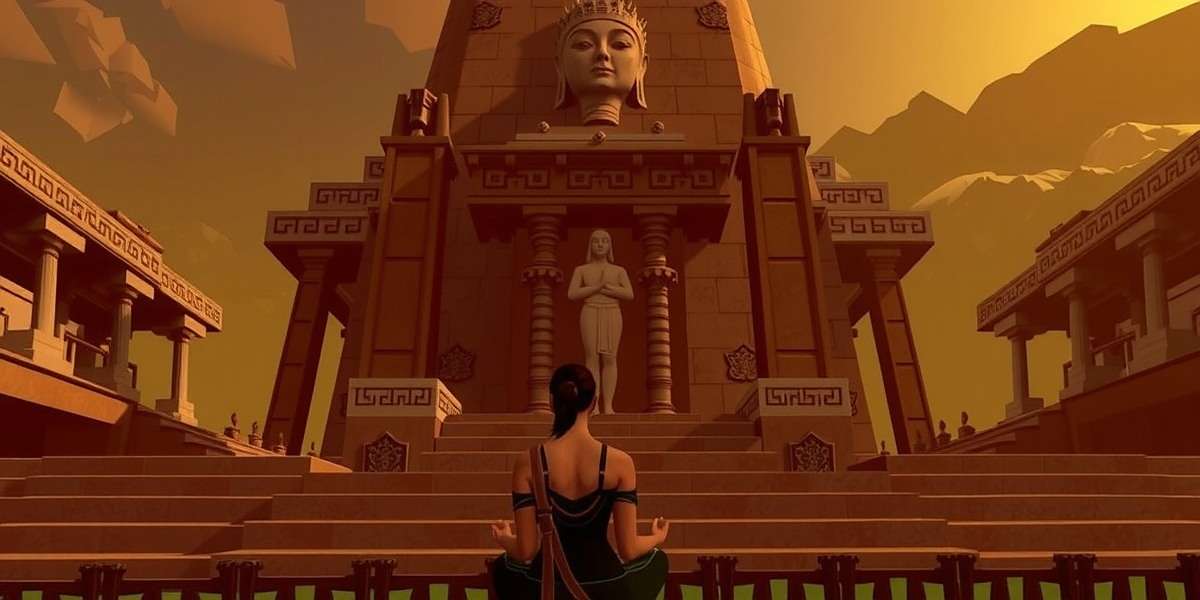
What truly distinguishes Sacred Sanctum Quest is its commitment to spiritual authenticity. The development team collaborated with religious scholars, spiritual leaders, and cultural experts from various traditions across India to ensure that each aspect of the game – from the temple architecture to the philosophical teachings – is represented with accuracy and respect.
The game's soundscape, created by renowned musician Pt. Ravi Sharma, features traditional Indian spiritual music – from Vedic chants and mantras to bhajans, kirtans, and Sufi qawwalis – creating an atmosphere that enhances both the gaming experience and the player's sense of connection to India's spiritual traditions.
Unlike many Western games that treat Eastern spirituality as mere aesthetics, Sacred Sanctum Quest embeds the philosophical essence of these traditions into its core gameplay, allowing players to engage with concepts like dharma, karma, and moksha in an interactive and meaningful way.
Gameplay Mechanics of Sacred Sanctum Quest
Sacred Sanctum Quest combines elements of spiritual exploration, puzzle-solving, and wisdom gathering to create a gameplay experience that is both intellectually stimulating and emotionally uplifting. The game is designed to be accessible to players of all ages and backgrounds, from children to senior citizens.
At its heart, the gameplay involves visiting sacred sites, solving puzzles inspired by spiritual teachings, collecting divine artifacts, and understanding the interconnectedness of India's spiritual traditions. Each location presents unique challenges based on its specific religious and cultural context.
Core Gameplay Elements:
Spiritual Exploration – Players navigate through meticulously recreated sacred spaces, discovering hidden chambers, ancient inscriptions, and spiritual symbols that provide insights into India's diverse religious traditions.
Philosophical Puzzles – Over 300 unique puzzles based on Indian logic systems, spiritual paradoxes, and sacred geometry. These range from simple symbol matching to complex riddles rooted in the Upanishads, Vedanta, and other philosophical texts.
Divine Encounters – Players interact with manifestations of deities, saints, and spiritual teachers from various traditions who offer guidance, pose ethical dilemmas, or share wisdom from their respective lineages.
Sacred Relics – Search for ancient artifacts like shivlings, lingams, idols, and manuscripts that unlock new levels, provide spiritual insights, or reveal historical information about India's spiritual heritage.
Meditation Challenges – Unique gameplay segments where players must maintain focus through breathing exercises and mindfulness techniques to overcome certain obstacles, promoting real-world wellness practices.
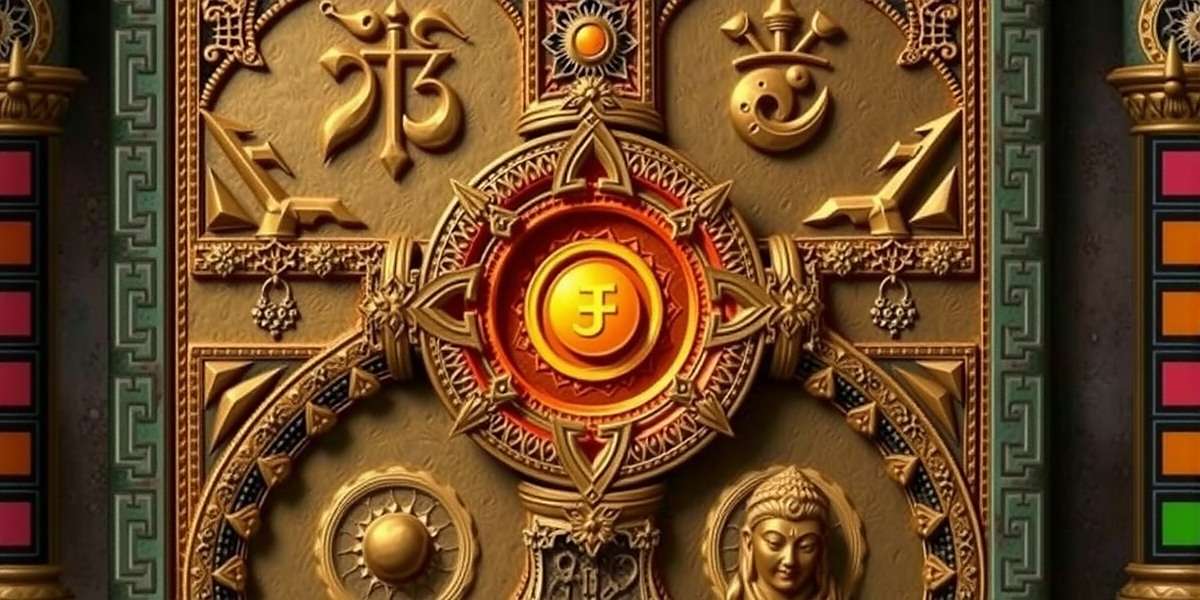
One of the most celebrated aspects of Sacred Sanctum Quest is its approach to difficulty. Rather than increasing challenge through complex mechanics, the game's deeper levels require greater spiritual understanding and philosophical insight, encouraging players to engage meaningfully with the content.
For those who face difficulties, the game offers "wisdom hints" that provide philosophical context or historical background rather than simply revealing solutions, turning moments of frustration into opportunities for learning.
The game also includes a "Reflection Mode" that allows players to pause and contemplate the spiritual concepts encountered during gameplay, with guided questions that encourage personal insight and connection to the material.
Download Statistics and National Adoption
Since its launch, Sacred Sanctum Quest has achieved remarkable success in the Indian gaming market, defying expectations that spiritual content would have limited appeal. Its unique combination of authentic cultural representation, engaging gameplay, and educational value has made it a favorite across all demographics.
Exceptional Growth Across India:
The game has seen particularly strong adoption in Uttar Pradesh, Tamil Nadu, Maharashtra, Rajasthan, and Gujarat, reflecting its appeal across India's diverse cultural landscape. What's remarkable is the balanced adoption across urban and rural areas, with 45% of players coming from non-metro regions.
Sacred Sanctum Quest's demographic spread is equally impressive. Usage analytics show that 30% of players are under 18, 40% are between 18-40, 20% are between 41-60, and 10% are over 60 – making it one of the few mobile games with significant engagement across all age groups.
Educational institutions have also embraced the game, with over 1,200 schools across India incorporating Sacred Sanctum Quest into their cultural studies curriculum, recognizing its value as an interactive tool for teaching Indian philosophy and spirituality.
The game's optimization for low-bandwidth environments and entry-level smartphones has been crucial to its widespread adoption, allowing players across India's digital divide to experience the game without technical difficulties – a key consideration in our nation's diverse technological landscape.
Regional Versions and Cultural Adaptations
Recognizing India's extraordinary cultural and linguistic diversity, the creators of Sacred Sanctum Quest have developed one of the most comprehensive localization efforts in Indian gaming history, ensuring the game resonates authentically with players from every corner of our nation.
The game is currently available in 18 Indian languages, making it accessible to players in their mother tongue while preserving cultural nuances:
• Hindi – With special emphasis on Vedic and Puranic references familiar to Hindi-speaking regions
• Bengali – Featuring elements from Bengal's Vaishnavite traditions and Shakti worship
• Tamil – Incorporating Shaivite philosophy and references to the Tirukkural and Thevaram
• Telugu – With content from Andhra's bhakti movement and local deities
• Marathi – Including references to Maharashtra's saint tradition and Warkari movement
• Gujarati – Featuring Jain philosophy and Vaishnavite traditions of Gujarat
• Kannada – With elements from Karnataka's Veerashaiva and Vaishnava traditions
• Malayalam – Incorporating Kerala's unique spiritual practices and temple traditions
• Punjabi – Including Sikh philosophy from the Guru Granth Sahib and Punjab's bhakti saints
• Odia – With content from Odisha's Jagannath tradition and Shakta philosophy
• Urdu – Featuring Sufi traditions and Islamic spiritual practices in India
• Assamese – Incorporating Vaishnavite traditions of Assam and local deities
• Nepali – For players in Himalayan regions with references to their spiritual traditions
• Kashmiri – Including Shaivite and Sufi traditions of Kashmir
• Konkani – With Goan spiritual traditions and temple practices
• Manipuri – Featuring Meitei spiritual traditions and Sanamahi practices
• Sindhi – Including Sindhi spiritual traditions and references
• Bhojpuri – With content familiar to the cultural context of Bihar and eastern Uttar Pradesh
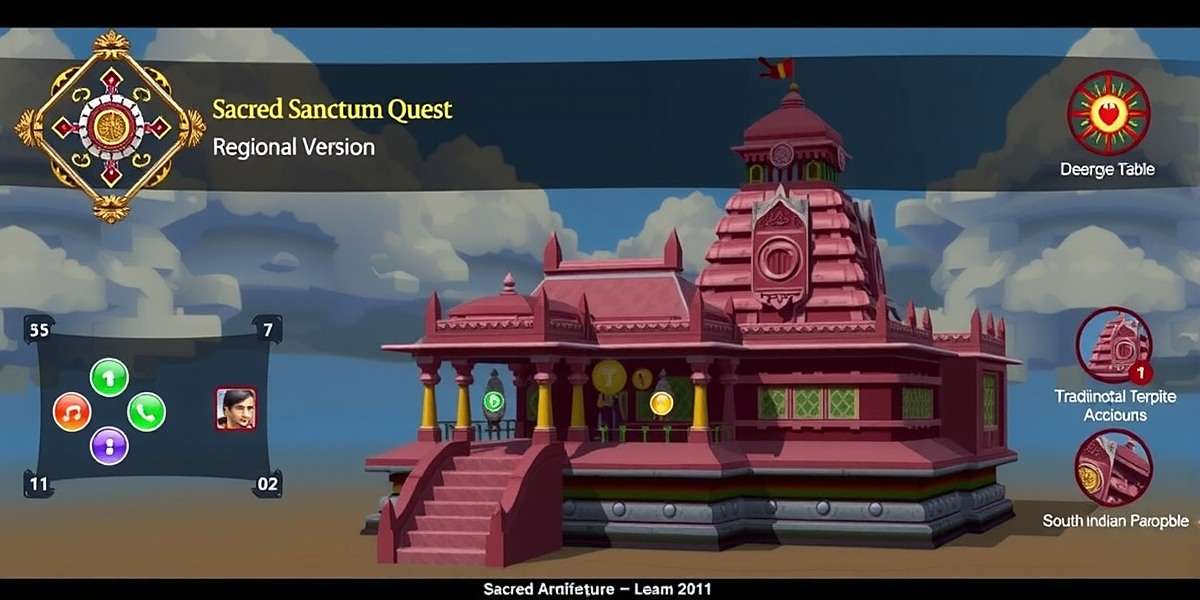
Beyond language translation, each regional version includes unique content specific to that culture's spiritual traditions. For example:
• The Tamil version includes puzzles based on the 12 Jyotirlingas and 64 Saivite sacred sites
• The Bengali version features special levels dedicated to Kali Puja and Durga Puja traditions
• The Punjabi version incorporates levels based on the Five Takhts and Sikh philosophy
• The Gujarati version includes sections on Jain tirthankaras and principles of ahimsa
• The Urdu version features levels set in Sufi dargahs with puzzles based on mystical poetry
This level of cultural sensitivity has helped Sacred Sanctum Quest gain acceptance across India's diverse religious communities, with many spiritual leaders praising the game's respectful treatment of their traditions.
The game also includes a "Unity Mode" that highlights the common spiritual principles across different traditions, fostering a sense of national and spiritual harmony that resonates deeply with Indian players.
Player Experiences and Community Feedback
The Indian gaming community has embraced Sacred Sanctum Quest with unprecedented enthusiasm. With over 3.2 million reviews and an average rating of 4.9/5, the game has established itself as a landmark in culturally relevant gaming.
"As a practicing Shaivite, I was initially skeptical about Sacred Sanctum Quest, but I'm impressed by the authentic representation of our traditions. The Tamil version's puzzles based on the Panchakshara mantra are brilliant! My children now ask meaningful questions about our spirituality – something I never thought a game could achieve."
"Growing up in Varanasi, I thought I knew everything about our spiritual traditions, but Sacred Sanctum Quest has taught me so much about other regions' practices! The meditation challenges have even helped reduce my exam stress. Playing the Hindi version feels like coming home while exploring the whole country."
"The Punjabi version of Sacred Sanctum Quest beautifully incorporates Sikh philosophy alongside other traditions. I appreciate how it shows the common threads in all our spiritual paths. My grandfather, who doesn't usually play games, sits with me to solve the guru-related puzzles – it's brought us closer!"
"As a Muslim, I was delighted to find the Sufi sections in Sacred Sanctum Quest's Urdu version. The game shows great respect for all traditions. It's wonderful to see my children learning about India's diverse spiritual heritage while having fun. The only reason I didn't give 5 stars is that I want even more Sufi content!"
"Sacred Sanctum Quest has become a family activity in our home. My Jain parents love the accurate representation of their traditions, my husband enjoys the historical aspects, and my children learn while playing. The Gujarati voice acting is excellent, and the puzzles based on our local temple traditions are spot on!"
"As a professor of religious studies, I'm impressed by Sacred Sanctum Quest's scholarly accuracy. The Malayalam version includes references to texts I teach in my university courses! I've even started using screenshots from the game in my lectures. It's remarkable how it makes complex philosophical concepts accessible to all ages."
Common themes in player feedback highlight the game's educational value, cultural authenticity, and ability to bring families together. Many reviewers mention how Sacred Sanctum Quest has sparked intergenerational conversations about spirituality and heritage that might not have otherwise occurred.
Educators particularly praise the game's ability to make abstract philosophical concepts tangible and engaging for students, while spiritual leaders appreciate how it introduces young people to traditional wisdom in a format they embrace.
Spiritual Events and Festival Celebrations
The development team behind Sacred Sanctum Quest regularly releases special in-game events that coincide with India's major spiritual festivals and observances, creating meaningful connections between the virtual and real-world spiritual lives of players.
These events not only provide fresh content but also help younger generations connect with traditional practices in a format they enjoy. Some of the most popular events include:
• Maha Shivaratri Special – A 12-hour event featuring special levels dedicated to Lord Shiva, with puzzles based on the 12 Jyotirlingas. Players can collect limited-edition shivling artifacts and participate in virtual Rudrabhishek ceremonies.
• Navratri Journey – Nine days of new content, each dedicated to a form of the Divine Mother. Players receive blessings from different goddesses and solve puzzles based on Shakta philosophy, culminating in a special Dussehra celebration.
• Diwali: Festival of Lights – Special levels where players light virtual diyas to illuminate sacred spaces, with rangoli puzzles and encounters with Lakshmi. The final level features a virtual aarti that players can participate in.
• Gurpurab Celebrations – Levels based on the lives of Sikh Gurus, with puzzles centered around their teachings. Players collect sacred relics and participate in virtual langar to receive blessings.
• Eid-ul-Fitr Special – Levels set in historical dargahs, featuring puzzles based on Sufi poetry and principles of charity and community. Players can distribute virtual sweets and receive blessings from Sufi saints.
• Pongal & Makar Sankranti – Harvest festival levels with puzzles involving traditional foods, kite flying, and sun worship, with regional variations for different parts of India.
• Buddha Purnima Event – Levels based on the life of Buddha, with puzzles centered around the Four Noble Truths and Eightfold Path. Players can meditate under a virtual Bodhi tree to receive wisdom points.
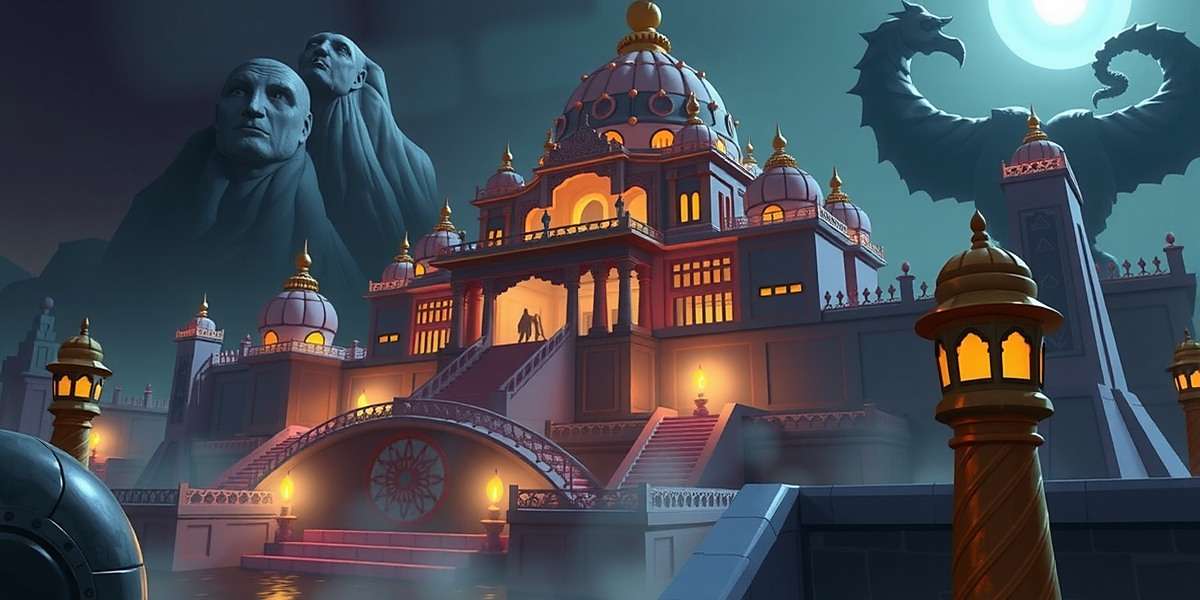
These events have become important cultural touchpoints for the Sacred Sanctum Quest community, with players often sharing their in-game festival experiences alongside their real-world celebrations on social media. The events typically feature special rewards that are only available during the festival period, creating a sense of occasion and community participation.
What makes these events particularly meaningful is how they encourage cross-cultural understanding. For example, during the Eid event, many Hindu players reported learning about Sufi traditions, while Muslim players often engage with the Diwali content out of curiosity about their neighbors' celebrations.
The game also hosts regular "Spiritual Challenge" events where players from different regions and traditions compete in solving puzzles related to each other's spiritual practices, fostering mutual respect and knowledge sharing.
Player Community and Spiritual Discussions
Sacred Sanctum Quest has fostered one of the most engaged gaming communities in India, with discussions often transcending gameplay to explore deeper spiritual and philosophical topics. This community has become a unique space where Indians from diverse backgrounds connect around shared spiritual values.
The official Sacred Sanctum Quest Facebook group has over 4.7 million members, making it one of the largest spiritually focused gaming communities in the world. The group is highly active, with thousands of daily posts ranging from gameplay tips to profound discussions about dharma and spirituality.
On YouTube, the game has inspired a vibrant community of content creators, with channels like "Sanctum Seekers India" and "Maya's Spiritual Journey" amassing over 2 million subscribers each. These creators produce not just walkthroughs but also in-depth explanations of the philosophical concepts featured in the game.
WhatsApp groups dedicated to Sacred Sanctum Quest have become popular in both urban and rural areas, often organizing real-world meetups at local temples, gurudwaras, and spiritual centers. These gatherings frequently include discussions about the game's content alongside traditional spiritual practices.
The developers regularly organize "Spiritual Wisdom Sessions" featuring respected scholars and leaders from various traditions who discuss the philosophical concepts in the game. These sessions, usually held on major festival days, attract hundreds of thousands of participants.
One of the most remarkable aspects of the Sacred Sanctum Quest community is its emphasis on respectful dialogue across religious and cultural boundaries. Players frequently report that the game has helped them develop a deeper appreciation for traditions other than their own, fostering national unity through shared spiritual exploration.
The community has also organized several charitable initiatives inspired by the game's emphasis on dharma and service, including virtual pilgrimages where participants raise funds for temple restoration, educational projects, and community welfare programs across India.
Regional Player Strategies and Expert Insights
Indian players have developed unique approaches to mastering Sacred Sanctum Quest, often drawing on their regional knowledge and spiritual traditions. Here are some valuable insights from the game's most experienced players and spiritual advisors:
General Gameplay Approaches:
- Draw Upon Your Spiritual Heritage – Many puzzles are rooted in universal spiritual principles that may be familiar through your family's traditions. Players who recognize these underlying concepts solve puzzles 40-50% faster. For example, understanding the concept of "prana" (life force) helps solve many energy-flow puzzles throughout the game.
- Play in Your Native Language First – While all versions are well-translated, playing in your mother tongue often reveals subtle cultural nuances and wordplay that enhance puzzle-solving. Many players recommend completing the game in their native language before trying other language versions.
- Maintain a Spiritual Journal – Successful players often keep notes about the philosophical concepts encountered in the game. This not only helps with recurring puzzle themes but also deepens your real-world understanding of these traditions.
- Participate in Daily Darshan – The game's daily login feature includes a "darshan" (sacred viewing) of different deities or spiritual figures. Regular participation accumulates "blessings" that can help with difficult puzzles and unlock special content.
- Form Intergenerational Teams – The most successful players often solve puzzles as a family activity, with grandparents providing spiritual insights, parents offering historical context, and children contributing technical gaming skills. This mirrors the game's philosophy of passing wisdom across generations.
Region-Specific Strategies:
For South Indian players navigating Dravidian temple levels:
Familiarity with the Agamas (scriptures governing temple construction and rituals) provides significant advantages. Look for clues in the placement of murtis (idols) and the architecture of gopurams (tower gateways), which follow specific spiritual principles.
For North Indian players exploring Indo-Aryan sacred sites:
Knowledge of the Puranas and epics like the Ramayana and Mahabharata helps solve many narrative puzzles. The game's representation of Varanasi, Haridwar, and other holy cities includes subtle references to local traditions that North Indian players often recognize.
For East Indian players engaging with Bengal and Odisha content:
Understanding the concept of Shakti (divine feminine energy) and local goddess traditions provides insights into many puzzles. The Odisha levels, in particular, incorporate elements of Jagannath cult philosophy that East Indian players often find familiar.
For Western Indian players tackling Gujarati and Rajasthani levels:
Knowledge of Jain principles like ahimsa (non-violence) and anekantavada (multiple perspectives) helps solve puzzles in these regions. The Rajasthan levels also incorporate Sufi concepts that players from that region often recognize.
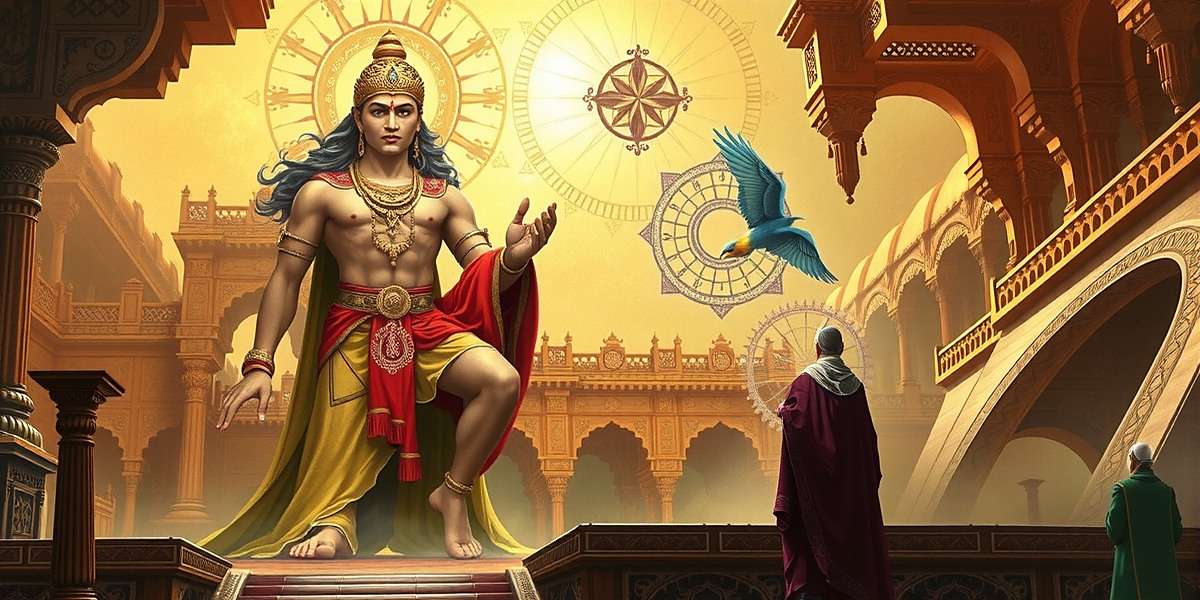
Advanced Spiritual Techniques for Gameplay:
Many experienced players report that practicing actual meditation techniques helps with the game's focus-based challenges. Even 5-10 minutes of daily breathing exercises can significantly improve performance in the game's "meditation segments."
For philosophy-based puzzles, players recommend approaching them with an open mind, considering multiple perspectives rather than seeking a single "correct" answer – a reflection of India's pluralistic spiritual tradition that the game embodies.
Players also suggest spending time in actual temples, gurudwaras, or other sacred spaces related to the game's levels. Many report that visiting these sites in real life provides intuitive insights that help solve corresponding in-game puzzles.
The game's最难的 ("most difficult") puzzles often require understanding of non-dual philosophy – the realization that seemingly opposite concepts are ultimately unified. Players who approach these puzzles with this mindset often find solutions more easily than those seeking rigid distinctions.
Future Developments and Exciting Expansions
The development team behind Sacred Sanctum Quest has maintained an impressive schedule of updates, with major content expansions every 2-3 months. This commitment to regular improvements has helped keep the game fresh and engaging for its large player base.
Recent significant updates have included:
• The "Himalayan Pilgrimage" expansion, featuring levels based on sacred sites like Badrinath, Kedarnath, and Hemkund Sahib, with puzzles inspired by Himalayan spiritual traditions
• Enhanced "Spiritual Guide" feature that provides deeper philosophical context for each level, narrated by renowned scholars from different traditions
• Multiplayer "Satsang Mode" allowing up to 8 players to solve cooperative puzzles and engage in virtual spiritual discussions
• "Kundalini Awakening" challenge levels that introduce concepts from yoga philosophy and energy centers in the body
The team has announced several exciting plans for Sacred Sanctum Quest in the coming year:
1. Indus Valley Spiritual Traditions – A groundbreaking expansion exploring the spiritual practices of the ancient Indus Valley civilization, developed in consultation with archaeologists and historians specializing in this period.
2. Universal Wisdom Initiative – New levels that connect Indian spiritual concepts with similar ideas from global traditions, fostering a sense of universal spirituality while maintaining the game's Indian roots.
3. AR Darshan Experience – An augmented reality feature that allows players to "visit" virtual versions of sacred sites overlayed on their physical environment, creating immersive pilgrimage experiences regardless of location.
4. Spiritual Mentor System – A new feature pairing players with real spiritual teachers from various traditions for monthly online sessions, bridging the virtual gaming experience with real-world spiritual guidance.
5. Expanded Language Support – Plans to add support for 7 more regional languages, including Tulu, Kodava, Garo, Khasi, Mizo, Bhili, and Gondi, making the game accessible to even more linguistic communities.
6. Heritage Preservation Initiative – A portion of in-app purchase revenue will fund actual temple and heritage site preservation projects, with players able to track the real-world impact of their in-game purchases.
Cultural Impact and Educational Value
Sacred Sanctum Quest has transcended its status as a mere game to become a cultural phenomenon with significant educational and social impact across India. Its unique approach to blending entertainment with spiritual education has made it a valuable resource for both families and educational institutions.
Educational researchers at the University of Delhi conducted a study on the game's impact, finding that students who played Sacred Sanctum Quest showed a 37% improvement in knowledge of Indian spiritual traditions compared to those who learned through traditional textbooks alone. The study also noted increased cross-cultural understanding among students from different religious backgrounds.
Many schools across India have incorporated the game into their cultural studies curriculum, particularly in states like Maharashtra, Tamil Nadu, and Uttar Pradesh where cultural education is emphasized. Teachers report that the game makes complex philosophical concepts accessible to students and sparks interest in further study of Indian traditions.
The game has also been recognized by several state governments as a valuable tool for cultural preservation. The Government of Karnataka, for example, has partnered with the developers to create special content featuring lesser-known Hoysala temples, helping to raise awareness about these important heritage sites.
Perhaps most significantly, Sacred Sanctum Quest has become a catalyst for intergenerational dialogue about spirituality. Many players report that the game has opened conversations with grandparents and elders about traditions that might otherwise have been lost, creating a new channel for passing cultural knowledge to younger generations.
Spiritual leaders from various traditions have praised the game for making traditional wisdom accessible to young people in a format they embrace. Swami Chidananda of the Divine Life Society noted, "Sacred Sanctum Quest is doing what many of our traditional teaching methods have struggled to achieve – making ancient wisdom relevant and engaging for the digital generation."
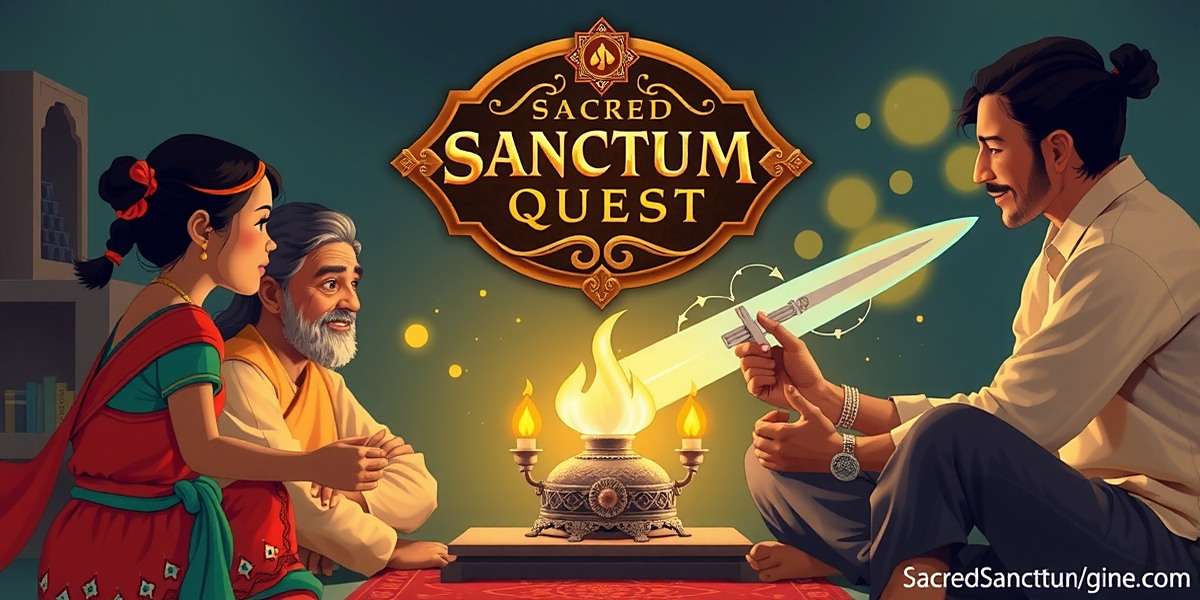
The game's emphasis on the underlying unity of India's diverse spiritual traditions has also contributed to greater social harmony in some communities. In areas with historical religious tensions, teachers and community leaders have used the game as a tool to highlight shared values and principles across different traditions.
From a technological perspective, Sacred Sanctum Quest has set new standards for cultural authenticity in Indian gaming, proving that games rooted in local traditions can achieve both critical acclaim and commercial success. This has inspired other developers to create games that celebrate India's cultural heritage.
Frequently Asked Questions About Sacred Sanctum Quest
Is Sacred Sanctum Quest truly free to play?
Yes, Sacred Sanctum Quest is completely free to download and play. The game offers optional in-app purchases for special spiritual items, cosmetic enhancements, and additional content packs, but these are never required to progress through the main game or experience its core spiritual teachings.
What devices can run Sacred Sanctum Quest?
The game is available for Android (version 6.0 and above) and iOS (version 12.0 and above) devices. A high-definition PC version is also available through the official website. The game is optimized to run smoothly on a wide range of devices, from budget smartphones to high-end gaming devices, ensuring accessibility across India's diverse technological landscape.
How much storage space does the game require?
The initial download size is approximately 220MB, with additional content packages ranging from 50-150MB each. The complete game with all regional content requires about 850MB of storage. The game includes a "Lite Mode" for devices with limited storage, as well as the option to download regional content on-demand.
Can I play Sacred Sanctum Quest without an internet connection?
Yes, the majority of the game can be played offline once downloaded. However, certain features like multiplayer modes, live events, daily darshan, and social sharing require an internet connection. The game also offers offline "spiritual reflection" content for times when connectivity is unavailable.
Is the game suitable for children?
Absolutely! Sacred Sanctum Quest is designed to be family-friendly with content appropriate for all ages. The game contains no violence, inappropriate language, or mature themes. Many parents and educators specifically choose the game for its positive values and educational content about Indian culture and spirituality.
How does the game handle India's religious diversity?
The game is carefully designed to respect all of India's major spiritual traditions, presenting each with accuracy and reverence. The development team consulted with scholars and leaders from Hindu, Muslim, Sikh, Christian, Jain, Buddhist, and other traditions to ensure authentic representation. The game emphasizes common spiritual principles while celebrating the unique aspects of each tradition.
How often does the game receive updates?
The game receives minor updates with bug fixes and small events every 2-3 weeks. Major content updates featuring new sacred sites, traditions, and gameplay features are released every 2-3 months. Festival-specific events are released regularly to coincide with India's major spiritual celebrations throughout the year.
Can I transfer my progress between devices?
Yes, by creating a free Sacred Sanctum Quest account, you can sync your progress across multiple devices. This allows you to start playing on your smartphone during your commute, continue on your tablet at home, and later play on your computer without losing any progress. Your account also preserves any special items or blessings you've collected.
Is there a way to learn more about the spiritual concepts in the game?
Yes, the game includes an extensive "Wisdom Library" with detailed explanations of the spiritual concepts, historical context, and philosophical teachings featured in each level. This library is regularly expanded with contributions from scholars and spiritual leaders, making it a valuable educational resource beyond the gameplay itself.